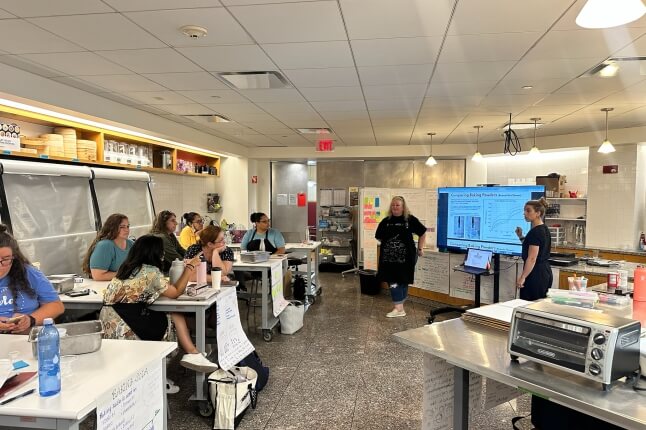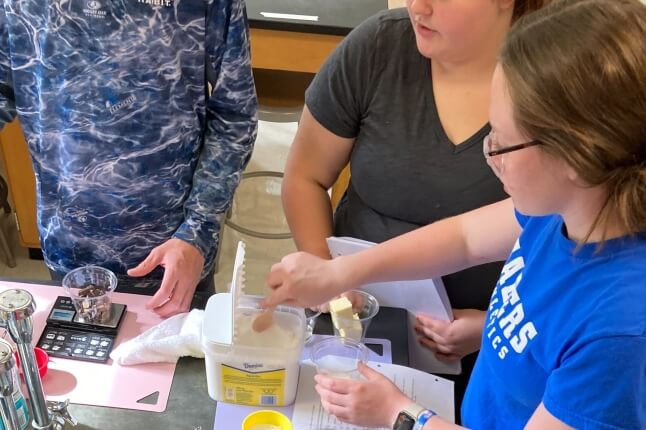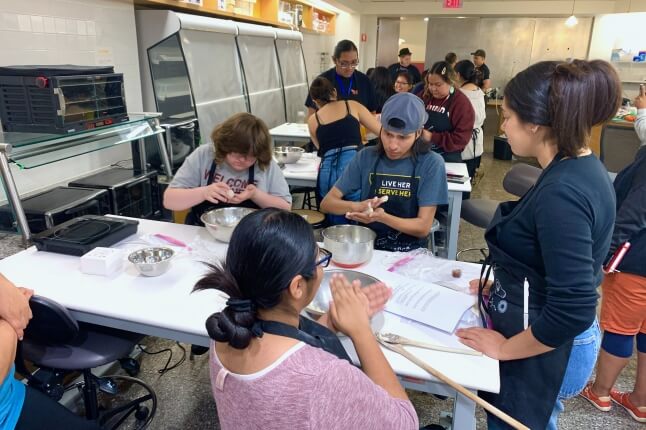News
“We worked to give these kids the tools to make smart, healthy decisions, and to teach them that science and math is everywhere, not just in the classroom,” said Kathryn Hollar, director of educational programs at SEAS.
In many cases, when you bring a room full of preteens together in the summer to talk about math and science—you don’t hear squeals of excitement. But then this was no ordinary class. This was the highly popular Science and Cooking for Kids, a week-long, free program that is developed and run by the Harvard School of Engineering and Applied Sciences (SEAS).
Here students in the 4th through 6th grade from Cambridge and the surrounding communities can come to learn about cooking techniques and how to connect food and cooking with science and math concepts. The classes are all taught by Harvard researchers and local award-winning chefs.
This is the third summer the program was offered, and again, it was a roaring success. More than two dozen kids crowded around tables pulling apart gooey grilled cheeses, dissecting chocolate mousse that was covered in clementine sorbet, or tentatively tasting gazpacho.
“My favorite part was making the food because we actually got to do a lot of it. We even made yogurt and ice cream using liquid nitrogen. It was so cool!” said ten-year-old Nika Kirsanova.
“We learned about molecules and fat and proteins and how they all come together. We even learned how to read calories and labels on the backs of food, so that we can make healthy choices,” said 12-year-old Zoe Padilla.
The kids made everything from ice cream, to sushi (a unanimous favorite), to chocolate mousse, to smoothies, to dumplings.
When asked what they had learned, Padilla yelled, “I learned that you can put too much air in the dumplings—mine exploded,” which brought a round of giggles from the table.
“We also learned a lot about safety,” said nine-year-old Manasa Rajesh said with a glimmer in her eye. “One of the chefs accidently pulled the safety shower string and had a bunch of freezing cold water dumped on her. It was an accident. But it was really, really funny,” she continued, as the entire table erupted into another fit of giggles.
They learned how food interacts—when does water boil, and why? Why do certain things behave in particular ways? They also learned about the importance of staying active.
“We worked to give these kids the tools to make smart, healthy decisions, and to teach them that science and math is everywhere—not just in the classroom,” said Kathryn Hollar, director of educational programs at SEAS.
“Math is really useful in cooking. It was neat to see how fractions worked, like how you can change how many portions you want to make, or how some ingredients changes things. It’s so cool,” Padilla said.
Twenty-year-old Frank Mooney is spending the summer helping Kathryn Hollar. Mooney, whom the girls affectionately call “Mr. Math” is a rising junior at Stonehill College and studying to be a high school math teacher. “I’ve really enjoyed spending some time with the kids, and being able to teach them math in new, exciting and different ways,” said Mooney.
Topics: Cooking
Cutting-edge science delivered direct to your inbox.
Join the Harvard SEAS mailing list.



